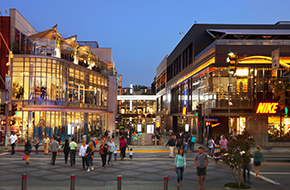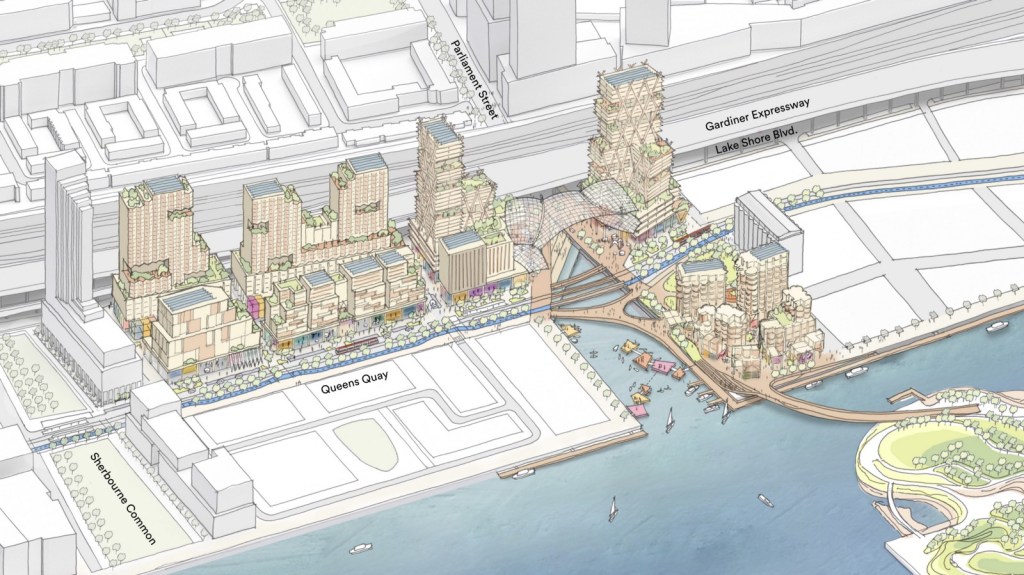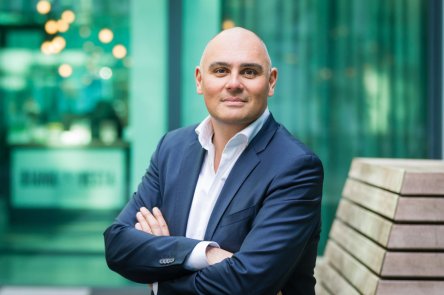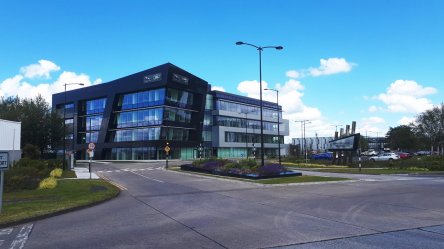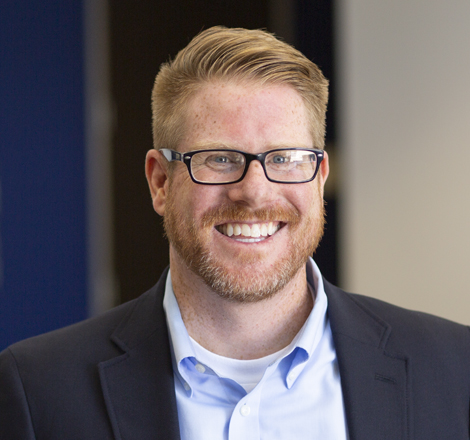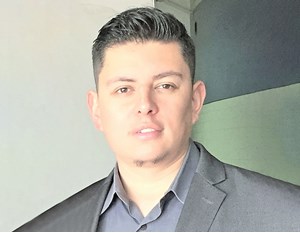Dallas-based multifamily community manager Pinnacle sought to reduce utility late fees and increase vacant utility cost recoveries at 170,000 residential units that it manages. “We needed to automate the entire process—payables, receivables, consumption data analysis and reporting that drilled down to a granular level of detail,” said Nicole Ellery, the company’s ancillary performance manager. Doing all this required replacing its cumbersome manual utility consumption tracking and billing with the Yardi Energy Suite. One element of the suite, Yardi Utility Expense Management, receives, validates and completes payments for Pinnacle’s utility bills. Another part, Yardi Utility Billing, monitors and bills residents for their utility consumption, which helps the company recover vacant unit costs, monitor usage, forecast utility revenue and cut waste with consumption alerts. How has the Yardi Energy Suite worked out for Pinnacle? The bottom line, Ellery said on a utility expense management panel at the most recent Yardi Advanced Solutions Conference (YASC), is “lower late fees across the board.” That happened because the comprehensive solution for utility billing, energy management and submeter data administration helps the company “track how properties are performing with line-by-line data down to the individual meter level as opposed to only invoice data.” “When we onboard a new property, we can see red flags such as high consumption on a meter and follow up with an investigation,” Ellery said. “Our property managers and accountants can drill down to each general ledger account and invoice if anything looks off and see what’s going on. We can see gradual increases in consumption and process invoices as soon as they come in.” She added, “We have saved thousands of dollars every year by nearly eliminating late fees. The suite vastly simplified our vacant unit recovery process, so it maximizes income too. We’d be...
Win at Branding
For Canadian Portfolios
Want to amplify your marketing returns and build a loyal customer base? Developing a strong brand identity can help you do both. Whether you’re an established midsized business or a burgeoning small company, it’s never too late to strengthen your brand identity. We attended the Canadian Federation of Apartment Associations conference with Sam Amin, marketing manager at Yardi, to learn more about creating a brand. What is a Brand Identity? Brand identity is more than your logo and color templates. Those are important, but your brand extends beyond what you can see and touch. At its foundation, a brand is a distinguishing mark, such a logo and other design choices. It tells us the source (company) behind a product (multifamily community). But as the “father of marketing” David Ogilvy explained it, the brand is “the intangible sum of a product’s attributes.” That means that your brand is also a set of associations connected to your business based on facts, emotions, and customers’ aspirations. How to Create Your Brand There is no need to reinvent the wheel. Amin recommends choosing from several branding formulas online to help you get started. Most formulas will require you to carefully articulate who you are and identify your customers and competitors. You’ll need to determine the type of community that you want to provide for your renters, physically and socially. As you work through each piece of the formula, be specific and authentic. Select messaging that feels natural even if (and especially if) it’s an unexplored angle for real estate. Your Brand—Everywhere, All the Time For the greatest impact, keep your brand in front of audience’s eyes. Be consistent with your messaging and steady with fresh marketing efforts that convey your messaging. “Use all your marketing tools including SEO,...
Empowered to Serve
Yardi UK
There are a lot of amazing people on this planet doing some fantastic work in their communities. These people are the heartbeats of nonprofits. Each year, Yardi offices around the globe embark on a mission to support such organizations, their staff members and volunteers. Employees often nominate nonprofits that hold a special place in their heart. Yardi UK is proud to support the following nonprofits in their efforts to create a more just, peaceful, and equitable world. Follow any of the links below to show your support. MK Food Bank– Milton Keynes has experienced its share of economic success. But like all metropolitan areas, many residents struggle with poverty and occasional crisis. With the help of referral agencies, Milton Keynes Food Bank identifies families and individuals facing food insecurity. The non-profit then provides nutritious, essential food items throughout the year. MK Food Bank is fully funded by donations and operated by volunteers. MIND BLMK– Did you know that 1 in 4 people will experience a mental health issue each year? About 1 in 6 will experience a mental health issue at some point in their lives. MIND BLMK wants to ensure that no-one has to face a mental health problem alone. The non-profit offers aid through peer support groups, mentoring, counselling, and corporate programs for clients of all ages in Bedfordshire, Luton and Milton Keynes. Age UK Milton Keynes– Many seniors face isolation and a lack of support. Age UK provides an array of services for older adults in need. Through the organization, seniors can receive counselling and social activities as well as services like cleaning, technology support, and vetted trade recommendations. Keech Hospice– Keech is one of very few organizations that provide free care for adults and children facing life-limiting and terminal illnesses....
Parade of Playhouses
Yardi Dallas Volunteers
Each summer for the last 24 years, a special event benefiting a great cause sets up shop at the NorthPark Center shopping mall in Dallas. It’s the Parade of Playhouses benefitting Dallas Court Appointed Special Advocates (CASA), and it raises much-needed funds for this important non-profit organization. CASA supports abused and neglected children in the Dallas area in 1979. The nationwide organization helps children in need gain safe, permanent homes. Last year, 1,300 CASA volunteers helped 3,100 Dallas kids. Their efforts are made possible by year-round fundraising and donations. For the Parade of Playhouses, Dallas architects, builders, businesses and individuals donate time, design and supplies to construct tiny houses, which are unique, creative, and might make a grown-up wish they could go back in time. Each is on a 10×12 foundation footprint. Some are modern and artistic, others whimsical, all just cool. Who wouldn’t love a backyard escape with a rock-climbing wall on the outside? Or how about a replica tiny travel trailer for summer backyard campouts? Families purchase raffle tickets for $5 each and enter to win the playhouse of their choice. CASA benefits from the funds raised, and a handful of lucky donors end up with a very special addition to their backyards. “My daughter is 11, and every year she loves to look at all the playhouses to decide which raffle we’re going to enter. When we don’t win, she wants Daddy to try to build it for her,” said Michael Sheaffer, senior director of client services in Yardi’s Dallas office. This year, Yardi employees played an important role in helping the fundraiser run smoothly by donating time to volunteer at the 17-day event. A total of 30 employees from the Dallas office were able to make time to help CASA, one...
Retail Rewards
Macerich + Pulse
The sustainability framework that leading retail property owner, operator and developer Macerich operates under calls for eliminating energy waste and nearly eliminating emissions, water waste and landfill impact. Evidence of Macerich’s success in translating these “Innovating to Zero” principles into best practices includes a No. 1 GRESB Benchmark ranking for four years running among North American retailers and a Top 30 onsite generation designation in the U.S. Environmental Protection Agency’s Green Power Partnership. The Santa Monica, Calif.-based S&P 500 company has generated 16 megawatts of grid relief and saved more than 300,000 KwH annually with solar panel installations and LED retrofits. It’s the only U.S. retail real estate company to earn the highest “Climate A List” ranking from CDP (formerly the Carbon Disclosure Project), the world’s most comprehensive collection of self-reported environmental data. Another accolade came in the form of a Commercial Real Estate Digital Innovation (“Digie”) Award in the Most Intelligent Building Project category that Macerich received at the Realcomm ׀ IBCon conferences in June. Macerich recently marked another notable milestone: the 10-year anniversary of a multifaceted energy management sustainability program that has reduced the company’s environmental impacts while squeezing every ounce of efficiency from its operations. The company’s plan called for using advanced energy management software to combine internet of things data with additional logic and analytics functionality. The goal was to turn disparate charts, graphs and reports into coherent, actionable intelligence for operations teams and managers across 51 million square feet of real estate in 15 U.S. states. The software central to achieving that vision, the Yardi Pulse Suite, integrated Macerich’s central energy management systems with utility billing, energy data collection and the Yardi Voyager property management and accounting system. The suite enables connection, analysis and display of building information from Macerich’s...
Chic. Cozy. Smart.
Toronto’s New Smart Neighbourhood
Sidewalk Labs, the urban innovation organization of Alphabet, Google’s parent company, has plans for a new neighbourhood in Toronto. The 800-acre site, Quayside, will be the first of its kind. The Neighbourhood Hip innovation and practicality combine on the streets of Quayside. “Torontonians want more affordable housing, faster ways to get around the city, safer streets for pedestrians and cyclists, [and] a cleaner and healthier environment,” said Jesse Shapins, Sidewalk Labs’s director of public realm. “That’s what we are aiming to do by creating this new neighbourhood.” To fulfill this vision, the site will be composed of mixed-use developments and 12 mass timber buildings up to 30 stories tall. “If the primary load-bearing structure is made of either solid or engineered wood, it’s a mass-timber building,” says Tsay Jacobs director of the Building Technology Lab at Perkins+Will and a member of the International Code Council’s Ad Hoc Committee on Tall Wood Buildings. The recently reimagined building method is a risk, but it bears great promise. Mass Timber + Modular Construction Due to innovations in building technologies, the unique construction style is strong enough to support tall structures with timber frames. It is also non-combustible, a necessity for many existing building codes. Canadian builders lead the industry in mass timber construction. The new Toronto neighbourhood has several experts on hand. In addition to durability and safety, mass timber construction can also be more sustainable. Sidewalk Labs estimates that construction carbon emissions will be 75 to 85 percent less than conventional construction. How? A combination of mass timber construction with modular technologies will allow for a significant portion of the building to take place off site. Modular construction cuts back on street closures, traffic congestion, scaffolding construction, site congestion, and a host of other disruptions and safety hazards. “We can build and manufactured building and have it stacked in a matter of months and have almost none of that disruption,” says Karim Khalifa, Director of Building Innovation with Sidewalk Labs. “By manufacturing, we should be more efficient and be able to drop down the cost to build these buildings.” Modular building also cuts back on the cost of renovations in the future. Modular spaces can be more easily customized as the needs of the resident or tenant change. “I can take a wall panel, make it become unclipped, and a new wall panel will be clipped in. The turnover time now will only be weeks,” says Khalifa. Buildings that permit greater customization may minimize cost construction and urban sprawl. As young families grow into larger families, for example, they may be able to grow in place. Quayside neighbourhoods become fluid, shifting with the needs of the community. “The landlord has the flexibility of taking that unit that might be one bedroom and combining them into family units to keep people on site,” says Leslie Gash, VP Development at Waterfront. Getting Around Getting around will also be more efficient. Quayside plans to connect to light rail for quick transit throughout the metropolitan area. A flexible streetscape is also in the works. Though the plans are not complete, the streetscape will meet Vision Zero guidelines and be suitable for autonomous vehicles. To boost pedestrian transit and cut traffic, covered walkways called “stoas” will help protect walkers from the elements. A floating walkway will connect Quayside with Promontory Park, an anticipated new greenspace. Pedestrians can also access the new Silo Park, which will be the star of the Parliament Slip inlet attraction. Efficiency has been worked into the power infrastructure as well. Grid energy for the buildings will be supported by photovoltaic panels, battery storage, geothermal wells, and sewer heat recovery. The ambitious combination of alternative energies aims to break tradition with neighbourhoods that are dependent upon city utilities. The housing plan breaks barriers, too. Toronto has faced an affordability crisis for years. At least 50 percent of residences will be priced at 40 percent below market rate....
Coworking Marketing
Strategies and Ideas
As the coworking and shared space industry continues to grow and evolve, it’s becoming much more evident that profitability is not only viable, there are ways to maximize and continue to grow your profits as an operator. Let’s dive into the best coworking marketing strategy for maximum growth. Host Events You’ve likely heard about the potential for fantastic events at coworking spaces. One of the major keys to building your brand is to hold events that are open to the local community. It’s free advertising! People who would otherwise have never stepped foot in your space get firsthand access to all the benefits your space provides. Even if they are not coworking candidates, word of mouth is one of your biggest assets. The more people know about your location, have been inside and can speak to its benefits, the better for you of course. Here are some ideas for events that you could organize within your space: Community panel discussions ‘Breakfast and Learn’ / happy hours Singles’ meetup events Yoga classes Also, keep in mind, if your space does not have 24/7 access, a great way to increase revenue is to host private events after hours. Whether it’s birthday parties, receptions, sporting event watch parties, or just about anything else that you have the room for and would take place past typical working hours. Last year’s Global Coworking Survey revealed that 21% of operators found organizing events to be a top challenge for them, and 50% said attracting new members was a top challenge. These events, whether during or after hours, will solve for a large part of both of those obstacles. Want to learn more about coworking marketing strategies? Check out the rest of this post on the Yardi Kube...
The data advantage
Yardi EU leadership insight
Editor’s note: reprinted with permission from Firestarters – Provada Edition. How to handle and collect available data is becoming a key competitive advantage in real estate, says Richard Gerritsen, regional director for Yardi in Europe. The quality of said data is essential. The real estate industry currently faces a watershed moment. “We are in the middle of an explosion of the volume of available data. Tenant apps and all other proptech solutions are worth nothing without the data. The upside is that it is easy to get the data, but at the same time collecting it is also the most difficult – and boring – part,” Gerritsen recently told me. As the real estate industry becomes increasingly digitalised, the quality of data will become ever more important, says Gerritsen. “You could argue that data is the most crucial part of the business. We are living in the data era and it is such a big part of the real estate industry. Any proptech solution tries to add value based on the data already available. Without good-quality data, the value of a proptech solution is limited in a best-case scenario. If you can’t guarantee that the data is good, you can lay dozens of apps over it, but it won’t be a sustainable solution. Those who say it is too much of an effort to bring it together will not succeed.” Gerritsen provides the following example to illustrate the importance of getting the details right. “If I log into a tenant app and discover that the lease information is not correct, that I have logged into unit 24 instead of 23, or that the app doesn’t know me at all, that is really bad. In the past 20 years, those types of errors were commonplace,...
IoT in Multifamily
Takeaways from CFAA
During the Canadian Federation of Apartment Associations (CFAA) annual conference, attendees walked away with a powerful call to action: understand the role of the Internet of Things (IoT) in your business before implementing. Fulfilling this objective can lead to success for multifamily firms of all sizes. What is the Internet of Things? The IoT embodies a multitude of devices that are connected to the internet. These devices range from smartphones to home automation and even wearable fitness monitors. Such devices can be controlled remotely and interact with other devices. In many cases, devices connected to the internet also gather and store user data to contribute to machine learning. Masa Hoshino, product manager at Yardi, explained that three components drive change in the IoT on the consumer level: hardware, software and culture. Hardware, like a smart refrigerator, may use wireless connectivity to automatically set the time on the clock. Software, such as apps installed on that fridge, is designed to solve a problem and provide a better user interface such as peeking in when grocery shopping. Lastly, the convenience of internet connectivity has made it a necessity for consumers. Connectivity increases the perceived value and functionality of hardware and software—and a home. How Does the IoT Impact Real Estate? In real estate, consumer culture and corporate benefits demand the integration of the IoT in our properties. Smart homes offer convenience, entertainment, and the potential for lower utility bills. While a home with multiple smart features is desirable for modern renters, multiple apps to control those features is very undesirable. True efficiency entails a single, reliable app that connects residents to their smart homes and property management through a secure user portal. For property stakeholders, the IoT can also be used to promote greater efficiency and...
Building a Flexible Brand
Yardi UK Think Tank
New Yardi UK roundtable discussion: With more property companies launching flexible workspace brands, Property Week and Yardi gathered a panel of industry experts to identify the secrets of success in a highly competitive market. Justin Harley (JH) – regional director, coworking, Yardi Maria Cheung (MC) – director and head of interior design, Squire & Partners Giles Fuchs (GF) – chief executive, Office Space in Town Alessa McNally (AM) – head of member’s experience, The Office Group John Williams (JW) – head of marketing, The Instant Group Simon Creasey (SC) – (moderator) contributing editor/features, Property Week What are the key components needed to create a successful flexible workspace brand? GF: Location, design, building layout, staff, culture, ethos, IT, consistency of customer service. You can go on forever making a list, but all of those things need to be a part of it. AM: Location is absolutely key. It’s definitely at the top of the list of things we look for when opening up a space. Also member experience. We are here to create a memorable experience for our members. JW: I agree, it’s all about the member experience. The conventional real estate market is still referring to the ‘occupier’ or the ‘tenant’. They’re thinking about looking after an asset and not providing an experience, which is what flexible workspace providers do so well. Once people experience the flexible workspace market I think it’s a shock when they go back to conventional office space because the level of service just isn’t there. What makes a great location for a flexible workspace centre? GF: We previously had a company that covered the whole of the UK and when we opened a property outside London one of my metrics was it had to be five minutes -walk from a Marks & Spencer. In London, our MO is that the location has to be within a four-minute walk – five minutes is probably okay – of a tube or rail hub. JW: I said two years ago that we were going to start to see the rise of second cities and coworking and flexible space becoming a story in the regions and I’m glad to say I was right. Demand for flexible workspace in cities like Bristol, Birmingham and Manchester is increasing by 25% to 30% every single year at the moment. Those secondary cities in the UK are really flying and we’re also seeing that in Europe and in the States. How important is design and fit-out to a flexible workspace brand? MC: It’s become massively important. It should have always been massively important, but the standards have been raised and everyone is really enjoying and realising the benefit of great design in the workspace. It’s no longer about sitting at a fixed desk. We are working in different ways. People want to be able to sit, to stand, to walk around and look at things. Design can enhance and allow different ways of working through the use of things like natural light, biophilia, control of the environment and even acoustics. JH: One of my favourite spaces in London is [flexible workspace provider] Uncommon. They have a lot of biophilia, but it’s the scent in their buildings that’s really beautiful. Smell is one of the most important senses. JW: I think there is a perception of how coworking and flexible space should look; it’s a bit like coworking design bingo. There should be exposed brickwork, free beer, lots of dogs and avocados on tap, but that’s not the case. There is a real individuality of different approaches and different spaces being provided. In the flexible workspace and coworking sector the word ‘community’ pops up time and time again. How important is it to create a sense of community in your flexible workspace? MC: When we created The Ministry [The Ministry of Sound’s private members club and coworking space] we worked closely with them...
Yardi Client Profile
Shannon Commercial Properties
Established in 2015, Shannon Commercial Properties (SCP) is a subsidiary of Shannon Group plc and provides commercial property solutions to commercial, industrial and aviation markets. The company owns and manages seven business and technology parks and has over 1.8 million square feet of office and industrial space, as well as approximately 1,600 acres of development land in over 40 locations across counties Clare, Limerick, Tipperary, Kerry and Offaly in Ireland. “We are focused on expanding our property portfolio in the Mid West region with the provision of further third generation office and industrial facilities, primarily located in Shannon Free Zone West, beside Shannon Airport,” said Jennifer Kearns, finance manager for Shannon Commercial Properties. SCP adopted Yardi Voyager to improve business processes and to gain better control and visibility of operations in one system. The move from disparate systems enabled SCP to handle all aspects of portfolio management including lease management, reporting, budgeting, maintenance, and financials from a single database. Prior to adopting Yardi solutions, SCP was operating across six different management systems. Initially, a new structure was proposed which detailed a four-system approach: property management, financial management, debt management and document management. However, after further examination and detailed discussions with Yardi about the company’s key needs, it became apparent that SCP could streamline onto just one system, Yardi Voyager. “Streamlining onto a single system has allowed us operate with a more reliable set of data. Multiple systems had resulted in unreliable data, which had increased the potential for inaccurate reporting. Combined with the powerful reporting functionality with Voyager, SCP is far better positioned to make strategic decisions than previously,” said David Neylon, capital sales executive for SCP. Gaining control over workflows was a key driver in SCP’s move to Yardi Voyager. Voyager enables SCP...
Meet Melise Balastrieri
MG Properties Group
How do you get more renters to your websites? Just ask Melise Balastrieri, vice president of marketing for MG Properties Group. Using the RentCafe Suite, Melise and her team manage the marketing for more than 20,000 apartment homes across five states. First, Melise uses RentCafe to create engaging property marketing websites. Then she drives more prospects to those websites using the expert SEO services of RENTCafé Reach. Once leads become prospects or residents, she relies on RentCafe CRM to keep them engaged. Keep reading to see how Melise makes it all work together. What is MG Properties Group’s mission? Melise: Our mission is enriching lives through better communities. And we believe that we do that with every single interaction that we have, whether it’s with a team member, our residents or our investors. What is one of your business objective in your role as vice president of marketing? Melise: A business objective that’s important to me is maximizing our use of technology in a way that affects our bottom line. That includes using it to get more leads that turn into leases. Because it’s not important just to have a lot of leads; you have to have leads that convert. How do you make SEO work for you? Melise: We use RentCafe Reach services to manage our SEO. We establish our goals based on the type of community we have, and our SEO specialist optimizes to make sure we’re attracting the leads most likely to convert. After all, we don’t just want a high quantity of leads; we’re more interested in high quality leads. RentCafe Reach provides clear and consistent SEO reporting. We can see things like website sessions, views and bounce rates to determine if we want to make adjustments. It’s been working really nicely for us. After three years of strong consecutive growth, our organic sessions were up another 21% last year. How do you improve lead capture? Melise: To capture online renters that visit our property marketing websites, we use some features in RentCafe that I think are very impactful. For instance, we encourage prospects to text us and schedule their own tours. We also use nudge marketing. These tools help us get in front of leads and give them options to contact us in ways that work for them. Our most recent data shows that, overall, our leads convert at 11%. But our self-scheduled appointment leads convert at 14% and our nudge marketing leads convert at 27%. These features are proving quite effective. How do you follow up with leads? Melise: At MG Properties Group, we automate follow-ups as much as we possibly can. Leasing teams are so busy onsite that follow-ups can get forgotten. Using follow-up tools in RentCafe CRM, we know our prospects are being contacted. We’ll use automated appointment reminders and drip emails to make sure we’re staying in touch with prospects. We invite them to call, tour and ask questions. We also use automated emails to stay in touch with our residents and secure renewals. We check in throughout their lease. As the end of their lease term nears, we express appreciation for their residency and remind them that we would love it if they continued living with us. Why do you use Yardi? Melise: What I really like about having Yardi as our property management technology provider is that most of the services we need are available in one solution. So we can deal with one company. That helps us simplify things as an organization. What marketing trends are you most excited about? Melise: I’m most excited about artificial intelligence. I think it’s super exciting and am anxious to see what it’s going to do for our industry. For example, Alexa and other digital assistants, what are they going to do for us? Will they be able to host tours, collect rent and submit service requests for our renters? (Editor’s...
Energy Education
Yardi Sponsors CHESC
Yardi didn’t have to venture far recently to share sustainability expertise with an audience eager for innovative energy efficiency ideas. The company provided top-level sponsorship plus an exhibit and speaker for the California Higher Education Sustainability Conference (CHESC), a forum for research and case studies at the University of California, Santa Barbara, just a few miles from its headquarters. The four-day gathering included more than 700 California higher education professionals including sustainability coordinators, construction, energy and environmental managers, engineers and facilities directors along with faculty and students. Experts from Yardi shared how the Yardi Pulse Suite, an integrated set of software solutions, supports sustainability efforts by helping reduce energy costs and consumption across all property types. They provided examples of the company’s success in helping property owners benchmark to ENERGY STAR® and make energy efficiency investments, and shared how Yardi promotes energy efficiency and sustainability through webinars, articles in trade publications, educational sessions at industry conferences and other activities. CHESC attendees learned that Yardi further displayed its sustainability sensibilities by achieving ENERGY STAR certification for its headquarters in 2018 and installing a real-time online dashboard that shows consumption data for each building at the corporate campus. In April 2019, the company’s initiatives earned designation as an ENERGY STAR Partner of the Year. “It is our hope that tools like ours will continue to help property owners and managers be more successful with energy initiatives and comply with new mandates like the California 2030 Green Building Goals,” Lexi Beausoleil, marketing campaigns specialist for Yardi energy solutions, told the conference, adding that technology can be a powerful tool for engaging people to “see the impact of their behaviors and empower them to make better choices.” Other presenters at the conference’s opening session included Dominique Hargreaves, deputy...
Workplace Accolade
For Brightview Senior Living
Yardi client Brightview Senior Living was named a “Best Place to Work” by the Great Place to Work Institute. It is one of only 40 aging services workplaces in the nation to receive the honor. Each year, Great Place to Work reviews applications and surveys to determine which thriving employers also have satisfied and enthusiastic employees. The goal of its evaluations and certifications is to help employers create outstanding, competitive workplaces that shine in business metrics like growth, profitability, and retention. Great Place to Work is also responsible for the annual Fortune “100 Best Companies to Work For®” list. To determine a “Best Place to Work” certification, Great Place to Work reviewed the surveys of more than 1,000 Brightview Senior Living employees. Each survey addressed 60 elements of team members’ experiences on the job. Those elements explored how employees feel about their work, their views on their workplace, employer’s involvement in the community, and the support and encouragement provider by the employer. Rankings are directly influenced by employees’ survey responses. Additional factors include metrics on cultural programs available to employees, workplace practices to attract and maintain talent, and programming that supports employees’ work-life balance. “We applaud Brightview Senior Living for seeking certification and releasing its employees’ feedback,” said Dr. Jacquelyn Kung, CEO, Great Place to Work’s senior care division. “These ratings measure its capacity to earn its own employees’ trust and create a great workplace for high performance.” Check out the feature story on the Brightview blog. Brightview Senior Living constructions, owns and manages a portfolio of 35 senior living communities that offer independent living, assisted living and dementia care. Properties span the East Coast as far south as Virginia. Learn more at...
AptCon Recap
Better Management Strategies
Are you practicing the most efficient and effective management strategies? Implementing technology at every point in the leads-to-leases process can help you optimize your approach. During the 2019 SVN Rock Advisors Apartment Conference (AptCon) in downtown Toronto, Peter Altobelli, vice president and general manager, sales at Yardi Canada, presented on the impact of new technology on property management strategies. In the session, “Operations and Management: Maximizing Value Through Professional Management,” Altobelli collaborated with fellow industry experts Lucy Gouveia, marketing and leasing director at Greenwin, Zola Mehlmakulu, operations manager at Skycord, and Trish MacPherson, executive vice president, operations at CAPREIT. The panel discussed the inextricable tie between successful modern management and technology. Marketing and Lease-Up Strategies Intelligent software can make the marketing and lease-up processes more efficient and effective. The panel recommended the following strategies: Create, launch and maintain a corporate website, regardless if you are in the construction phase. Include floor plans, photos and videos. Websites promote your brand and attract prospects who are interested in becoming a part of your community. For new builds, begin the lease-up at least two months into construction. This schedule provides time to craft your renter experience within your marketing and customer relationship management (CRM) software. Paying special attention to your renter experience provides you with a way to build trust, reliability, and customer satisfaction with prospects. “Yardi in Canada is known for our ERP and accounting software solutions,” began Altobelli. “In conjunction with that, we’re offering a fully integrated marketing and CRM solution in a single database that connects to all Yardi products. With lease-up underway, the advantages of a fully integrated system become apparent. Once the applicant becomes a resident, their information is fed seamlessly into the property management and accounting system. Having integrated software saves...
Sales Staff Rejoice
CRM for Senior Living
In today’s busy digital marketplace, prospective residents and families expect to be able to research your senior living community online and get the information they’re looking for at any time of the day, but does that mean you’re suddenly able to hire more staff for round-the-clock support? Of course not. Full-time customer service requires savvy tools. That’s where marketing automation comes in. It streamlines repetitive tasks, tracks prospect behavior and delivers targeted content to get customers into your pipeline. You can learn more about marketing automation for senior living with Yardi’s new eBook, which uncovers 9 marketing automation strategies to implement right now in your community. But first, let’s look at some of the high-level benefits of marketing automation technology: It Saves Time With many organizations running lean and mean, employees often wear many hats. Why not leverage tools that expedite administrative tasks? Eliminating duties like redundant data entry and emailing appointment reminders not only reduces the risk of error, it also boosts staff satisfaction and output. In fact, teams using marketing automation report a 14.5% increase in sales productivity. It Saves Money Automating marketing processes not only saves times, it saves money too. With the right tools, what once took hours now takes minutes-and since time is money, that time savings quickly adds up. Beyond carving out more time for your team, marketing automation also saves money by making your marketing dollars work harder, thanks to advanced analytics that provide visibility into which marketing channels are most effective for your community, improving overall ROI. It Improves Service By now, you know that marketing automation reduces workload for sales staff and helps scale and streamline processes, but did you know it also creates a better experience for prospects, too? With systems in place that...
Changemakers
Patricia Will, Belmont Village
Welcome to our second segment of the Senior Housing News (SHN) magazine series, The Changemakers. Yardi is the presenting sponsor of this insightful set of interviews. SHN sat down with nine industry leaders who demonstrate how adaptability and innovation pave the way for success. In this installment, meet Patricia Will, Belmont Village founder and CEO. Will is accustomed to making waves. During her 20-year career, she has boldly challenged and improved upon traditional senior housing models. Will combined multiple levels of care into one building, collaborated with universities for care support, and developed an early-stage dementia intervention program. The future of Belmont Village looks bright. The organization recently entered a partnership with Baptist Health System of south Texas. Together, they will co-develop wellness-centered senior communities. What are some changemaking efforts you’re most proud of, within Belmont Village or the industry as a whole? Will: The first is a simple one, which is including independent living, assisted living, and memory care under one roof, in one building that’s fully licensed. We did that in an effort to accommodate couples, and in an effort to fight ageism. There’s a notion that people would object, in independent living, to seeing walkers or wheelchairs, and we decided to say that we have capable people who have different needs, and we don’t want to segregate them. That’s something that we did for the very first time on our first building in California, in San Diego, and we’ve now replicated in many parts of the country, although it’s still not done enough. We’ve integrated dining rooms, integrated gyms, integrated social areas and even integrated floors. Can you take me back to that moment when that was still a new idea, to integrate in that way? Will: Everyone in the industry...
Accounting Efficiency...
Silverado + PAYscan
About a year ago, Carmin Tomassi, vice president, controller at Silverado, walked through the doors of the Irvine, Calif., headquarters for the first time. He was promptly introduced to all 12 systems used by the AP department. From day one, he knew that greater efficiency would take the organization to the next level. He enlisted Yardi to help make that vision a reality. Identifying inefficiencies Silverado’s presence spans the west coast and midwestern United States. Its 59 properties specialize in senior care with an emphasis on assisted living and memory care, as well as hospice and home services. Each location offers a broad range of services for aging seniors. The sites require specialized equipment and steady maintenance. Each day, the accounts payable team received stacks of invoices in various stages of completion and accuracy. Approvals and reconciliation with the general ledger took days longer than Tomassi preferred. To create efficiency, he embarked on a campaign with two major goals. The first was to simplify the department’s software use. “We had maybe a dozen systems that affect accounting. They were all different which was just crazy to me. Even keeping track of your logins was ridiculous,” said Tomassi. “With accounting, things need to talk to each other, and it needs to be seamless. Otherwise, you’re asking for trouble.” The second goal was to expedite approvals by streamlining the filing process. “AP would arrive in the morning and there would be stacks of invoices in their little baskets: no signatures, no allocations, no coding, no nothing, right? They just kind of dealt with it for a while but I said, ‘No. We’ve got to figure out a way to make this more efficient.’ We also needed metrics so we can track the workflow and make changes.”...
Houston Outlook
Boris Sanchez, Sanmore Investments
Houston’s multifamily sector has certainly faced its share of challenges over the past few years. In 2017, Hurricane Harvey rendered between 7 and 11 percent of the metro’s units uninhabitable. Further, significant fluctuations in oil prices have also affected the city’s real estate market. Year-over-year rent growth, as of March, came in at a tepid 0.6 percent, while occupancy rates declined to 92.4 percent, according to a recent Yardi Matrix national multifamily report. But many investors are finding innovative ways to ensure returns on their investments. Some 14,000 units are under construction across the metro, the vast majority as part of luxury developments. Significant capital deployment is also underway in the realm of value-add acquisitions. Yardi client Sanmore Investments, a multifamily developer and redeveloper based in Houston, has been involved in the market’s value-add arena for more than five years, acquiring and rehabilitating several properties in the metro. Owner Boris Sanchez discusses recent trends in Houston’s multifamily sector and how investors can make their value-add acquisitions shine. How would you describe the overall appetite for redeveloped multifamily properties in the Houston metro? Sanchez: At Sanmore, we have personally seen the demand for our turnkey properties increase to an all-time high. However, in the last six months, that demand has been met and exceeded by the demand for value-add properties. As other areas of the country tighten, Houston’s higher cap rates and landlord-friendly laws have become more and more attractive to investors. In addition, we have seen a record number of residential investors turn to commercial for more opportunities, stronger economies of scale and less hands-on management. This is all coupled with Houston’s strong economic growth and growing population, creating a red-hot multifamily arena in Houston. Considering the metro’s slow overall rent growth this year, how can...
Rural Broadband
Tips for Multifamily Providers
Rural communities face a notable dilemma. Internet service providers (ISP) claim fast broadband coverage in remote areas but often fail to deliver. As a result, you struggle to offer efficiency to your staff, residents, and prospects. A few hacks can help you improve your broadband offerings until more permanent solutions arrive. Rural Broadband Setbacks Nearly 63 percent of rural Americans have purchased broadband internet connection but many struggle with connectivity issues. Towns with slow broadband face economic setbacks. High-speed internet is a foundational principal in modern businesses and institutions. Without it, commerce wanes. Reliable connectivity is needed to reach prospects and provide services for customers. To address the broadband overage gap, the Federal Communications Commission (FCC) set aside $4.5 billion in rural grants for broadband infrastructure improvements. The program stalled before it gained momentum. The FCC soon realized that there were major discrepancies between coverage maps issued by ISPs and functional coverage experienced by users. An investigation is underway to determine if carriers have violated rules and submitted incorrect coverage data. Coverage maps matter. Towns that are dubbed “well connected” are ineligible for FCC improvement grants. Yet businesses and residents of these towns have problems with basic functions like sending emails, streaming webinars, and using navigation around town. “Our maps simply do not reflect the state of deployment on the ground. That’s a problem,” explains FCC Commissioner Jessica Rosenworcel. “We have a digital divide in this country with millions of Americans who lack broadband where they live. If we want to fix this gap and close this divide, we first need an honest accounting of high-speed service in every community across the country.” Based on coverage maps submitted by ISPs, about 24 million people lack access to broadband at home. In contrast, an independent study...





